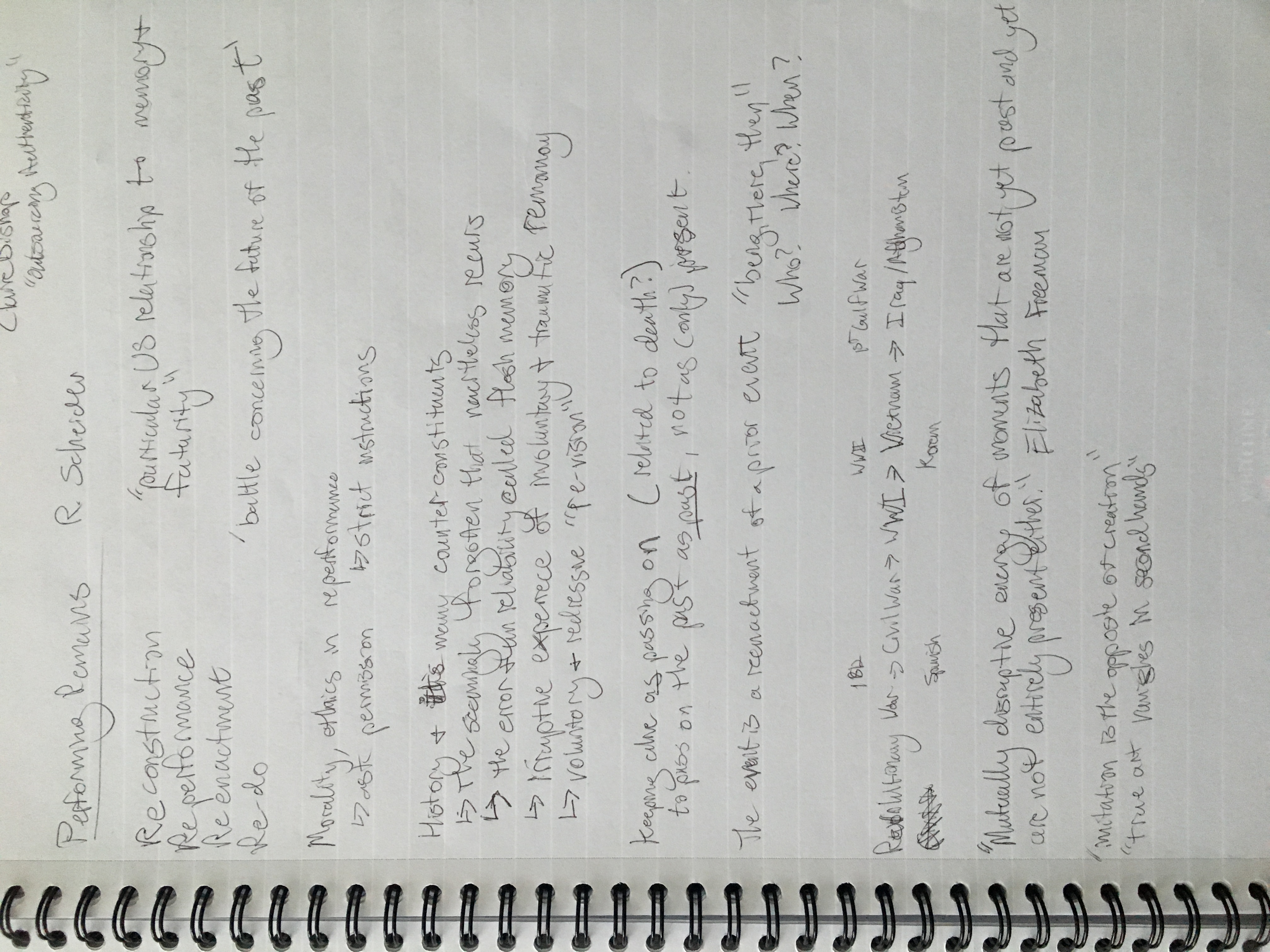Marina Abromovic, in her reperformances of 1960s performance artworks decided to ask permission of the authors or original performers, and followed their instructions strictly, in an attempt to create an 'authentic' reperformance of the earlier work.
Another complicating linguistic quip by Schneider, but one that suggests a certain kind of framework for reconstruction intereted in a degree of preservation. These might be 'purists'.
None of these four terms exactly define what it is that I'm doing, but they all relate to it somehow. The other 're' that I've been using is 'renovation' as defined by the Japanese architect Tadao Ando:
“In my view, renovation is neither about simply preserving the old nor overwriting the old with something new. Rather, it is about creating a condition where the old and new coexist in a fine balance. The resulting dialogue between then connects the time flowing within a building from the past through the present and into the future and breathes new life into its spaces. Renovation projects can thus be described as endeavors to build upon what exists (the memories etched in a building) and to create that which does not exist (the new possibilities for its future)."
This draw towards the original/authentic (if indeed there exists a singular origin, and/or the definition of authentic, remains a question) continues to fascinate me. Indeed, the question that brought me to (re)consider my role in reconstructions of Cunningham's work was pointedly about the authenticity of the work.
In 2015 I performed in a reconstruction of Cunningham’s Crises (1960) as part of the Conlon Nancarrow festival 'Anywhere in Time' at the Whitney Museum of American Art. Choreographer Sarah Michelson came to see one of the (re)performances, and at the talkback afterwards she asked “So, was the piece we just saw Crises? Was it actually the dance or something else?”
“To consider the live a record of precedent material flips on its head the supposition that the live is that which requires recording to remain. But drama is not the only example where the ‘live’ is understood to take place in the future of that which has been ‘set down’. The same could be said for liturgy, or any inscribed set of performatives written to require repetition where repetition is both reiteration of precedent and the performance of something occurring ‘again for the first time’.”
“‘Live'” and ‘liveness' are words that sometimes attend, like difficult cousins, to reenactment, for reenactment as a performance practice appears to “take place” in time, live, even as the times that take place are given to be multiple, layered, or crossed.”
These thoughts are perhaps not the main thrust of my research, but in studying an American, as an American in Sweden, the national identity of both subject and object of study has emerged as an open question. Is there something particularly American about the work of Merce Cunningham, and is there something particularly American about the question of 'legacy'? What in particular about the US relates memory and futurity?
While I don't feel so combatative currently, some might see the differing ideas on the present (and the future) of Merce Cunningham's work as a conflict, a clash, a source of tension.
Jennifer Goggans (the former Merce Cunningham Company member who had performed in a Cunningham-supervised reconstruction of Crises in 2006 and had staged this iteration of the choreography) didn't engage with the theoretical underpinning of this question in her answer (“Of course it was, yes!” she responded, annoyed and disrespected). But it immediately sparked my interest. Suddenly the weight of what I was doing hit me. What was I doing onstage? Who was I, never trained by Merce Cunningham himself, to be dancing a role originated by him?
Three years later, across the Atlantic Ocean at DOCH, I'm asking myself that question, trying to unpack what it means to participate in Cunningham's work now, and again.
